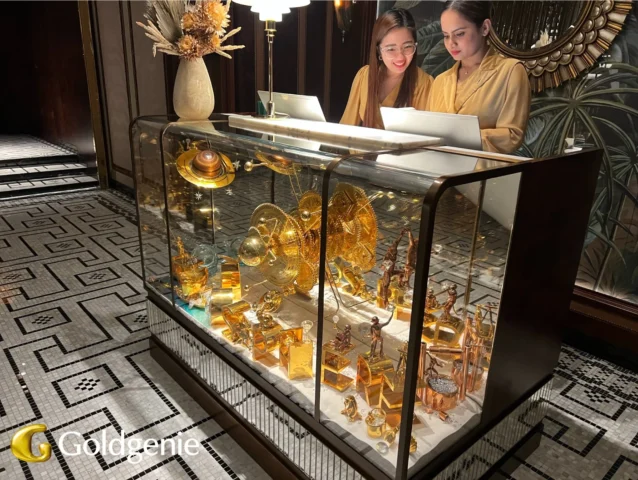

In the realm of artisanal craftsmanship, local gold plating emerges as a niche but captivating practice that not only embodies the timeless allure of gold but also fosters community connections. In the quest for unparalleled elegance and personalized luxury, finding the best gold plating services near you becomes paramount. This article delves into the world of gold plating, exploring the unique characteristics, craftsmanship, and sustainable aspects that set it apart from larger-scale counterparts.
Local gold plating distinguishes itself through the meticulous craftsmanship that goes into each piece. Unlike mass-produced items, local gold plating often involves skilled artisans who bring a personal touch and attention to detail to every project. The process, which typically takes place in small workshops or studios, emphasizes quality over quantity, allowing for a more intimate and customized approach.
Artisans engaged in gold plating often draw inspiration from traditional techniques, blending age-old methods with contemporary design. This fusion results in unique and culturally rich pieces that reflect both the heritage of gold craftsmanship and the creative innovation of local artists.
One of the defining features of local gold plating is its emphasis on community engagement. Local artisans often collaborate with other craftspeople, designers, and community members to create pieces that resonate with local aesthetics and values. These collaborations not only enrich the creative process but also strengthen community ties and support local economies.
In some cases, local gold plating becomes a communal effort, with artisans hosting workshops or involving community members in various stages of the process. This collaborative approach not only ensures the preservation of traditional techniques but also fosters a sense of pride and ownership within the community.
As global concerns about sustainability and environmental impact continue to rise, local gold plating distinguishes itself through a commitment to eco-friendly practices. Artisans engaged in this craft often prioritize sustainability at every stage of the process, from sourcing materials to waste disposal.
Local gold plating is not merely a craft; it is a custodian of cultural heritage. Many regions with a rich history of gold craftsmanship have seen a decline in traditional practices due to globalization and mass production. Gold plating, by embracing traditional techniques and infusing them with contemporary elements, becomes guardian of cultural identity.
Artisans often incorporate cultural symbols, motifs, and techniques passed down through generations into their work. This infusion of heritage into the craft not only adds depth and meaning to the pieces but also contributes to the preservation of cultural knowledge and skills.
While local gold plating offers a host of benefits, it is not without its challenges. Limited resources, market competition, and the need for constant innovation pose hurdles for local artisans. However, these challenges also present opportunities for growth, innovation, and the creation of a niche market that values authenticity and individuality.
Local gold plating stands as a testament to the enduring power of craftsmanship, sustainability, and community collaboration. In a world often dominated by mass production and globalization, these artisans carve out a space for themselves by embracing tradition, engaging with their communities, and weaving stories into every gilded creation. As consumers increasingly value authenticity and ethical practices, the allure of local gold plating is poised to grow, enriching not only the world of luxury but also the cultural tapestry of the communities it touches.

